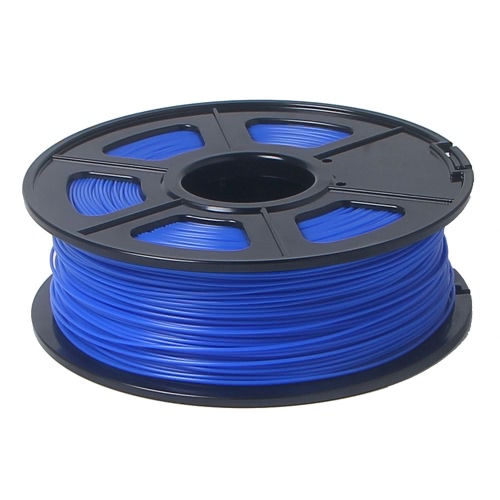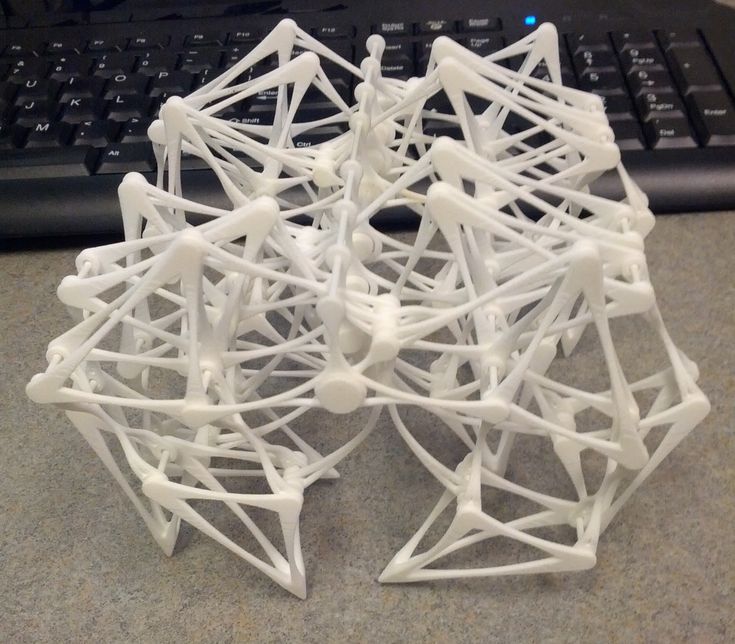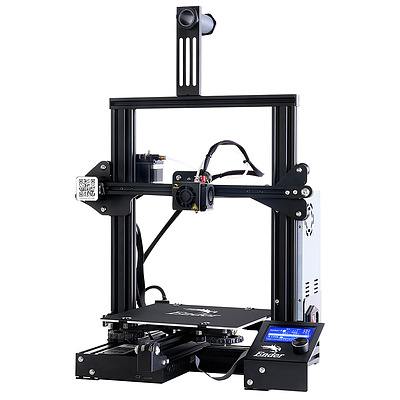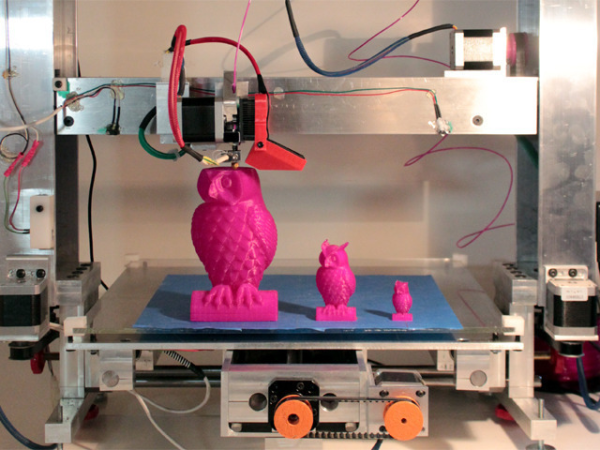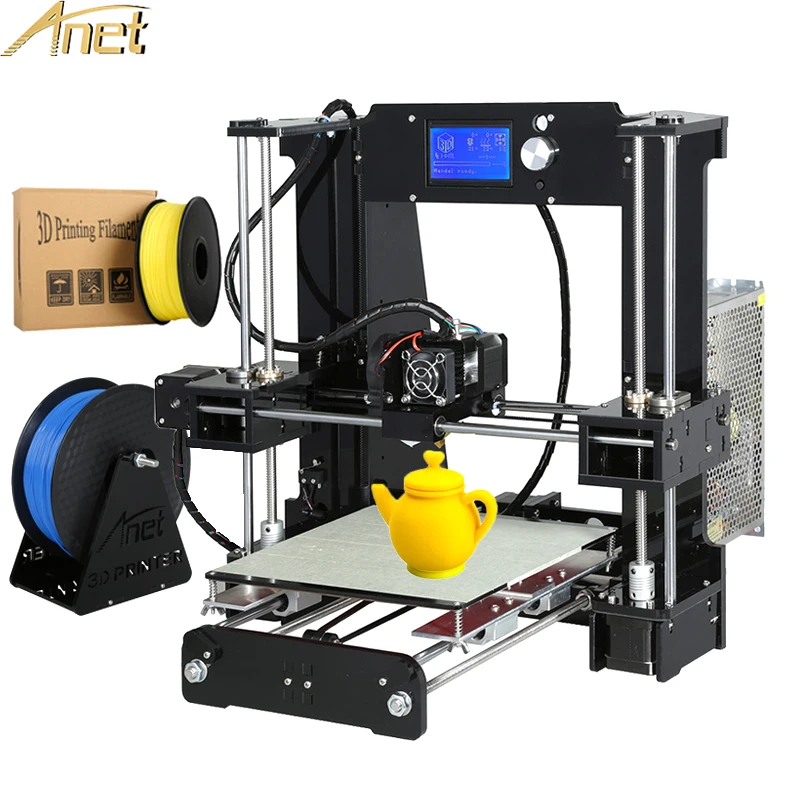Plastic surgery 3d printing
3D Printed Models Help Plastic Surgeons Plan and Perform Rhinoplasty
While it is difficult to lose any part of your body, the psychological impact is devastating when it involves a part of the face, such as the nose. Just ask Dallan Jennet. Dallan’s face was disfigured at the age of 9 after he fell out of a tree onto a live power line, severely burning his entire face and losing his nose. At the time, Jennet was so embarrassed by his face he refused to go to a local hospital to meet Dr. Tal Dagan, an Associate Adjunct Surgeon at Mount Sinai Hospital’s Division of Facial Plastic and Reconstructive Surgery. So, the doctor traveled to the boy's remote location in the Marshall Islands to see if there was anything that could be done. "I explained that it would be a very long road of multiple surgeries," Dagan recalled. "I would have to borrow skin from his forehead. He was still on board because he really wanted his nose back."
Jennet's path to a new nose started in early 2015, with the first of six surgeries in the Marshall Islands, where expanders were placed under the remaining skin of his nose to make room under his skin for the new nose to be implanted. Dr. Dagan and a team from Oxford Performance Materials, Inc., a leading advanced materials and 3D printing company, created a 3D printed facial device that would replicate a natural nose in appearance and functionality. Unlike a standard implant, the device was created using sample models taken from the noses of the patient’s close family members to recreate the most natural and culturally appropriate graft. It also allowed the surgeons to rehearse the complex procedure and create a custom operation to minimize complications.
Now 15, Dallan flew halfway around the world to New York City for the opportunity to live a normal life with the help of Canvasback Missions, Inc., a nonprofit organization that brings health care and health education to the Pacific Islands. During the 16-hour surgical procedure at New York Eye and Ear Infirmary, Dr. Dagan and Dr. Mashkevich utilized a new laser-based technology to scan the surface of the patient’s face and visualize the blood vessels feeding his skin to help determine if the skin was healthy enough for reconstruction. With tissue and blood vessels harvested from Dallan’s thigh, the surgical team removed large amounts of scar tissue, inserted the graft, and reconstructed the skin over the 3D printed nose implant. They performed four additional surgeries and follow-up outpatient exams. The result was a full reconstruction of Dallan’s nose, with his senses of smell and taste restored. The implant is permanent, flexible, and will not need to be replaced as he continues to grow. “We believe that this procedure will allow the patient to live a happy and productive life,” says Grigoriy Mashkevich, MD, Assistant Professor of Otolaryngology, Division of Facial Plastic and Reconstructive Surgery at Mount Sinai Hospital. “We also hope that this approach will be a viable option for others with severe facial deformities, such as war victims who require reconstructive surgery. This procedure may be a breakthrough in facial reconstruction because the patient will never have to deal with the standard issues of transplantation, such as tissue rejection or a lifetime of immunosuppressive therapies.
With tissue and blood vessels harvested from Dallan’s thigh, the surgical team removed large amounts of scar tissue, inserted the graft, and reconstructed the skin over the 3D printed nose implant. They performed four additional surgeries and follow-up outpatient exams. The result was a full reconstruction of Dallan’s nose, with his senses of smell and taste restored. The implant is permanent, flexible, and will not need to be replaced as he continues to grow. “We believe that this procedure will allow the patient to live a happy and productive life,” says Grigoriy Mashkevich, MD, Assistant Professor of Otolaryngology, Division of Facial Plastic and Reconstructive Surgery at Mount Sinai Hospital. “We also hope that this approach will be a viable option for others with severe facial deformities, such as war victims who require reconstructive surgery. This procedure may be a breakthrough in facial reconstruction because the patient will never have to deal with the standard issues of transplantation, such as tissue rejection or a lifetime of immunosuppressive therapies. "
"
Since Dallan Jannet received the first 3D printed nose implanted in the United States, 3D printed patient-specific models have emerged as a useful new tool for planning and carrying out rhinoplasty, considered one of the most challenging procedures in plastic surgery. Rhinoplasty – sometimes called a "nose job" or nose reshaping – is one of the most frequently performed types of cosmetic surgery. About 219,000 rhinoplasty procedures were performed in the United States in 2017, according to ASPS statistics.
Patient-specific, life-sized, 3D-printed models can provide a useful visual reference in the operating room for plastic surgeons performing rhinoplasty, according to a special "Ideas and Innovations" article published in Plastic and Reconstructive Surgery authored by Bardia Amirlak, MD, FACS and his colleagues at the University of Texas Southwestern Medical Center in Dallas. According to the authors, "Patient-specific 3D printed models reflecting the actual 3D anatomy provide additional visual and tactile information to the surgeon which may contribute to achieving the desired clinical result.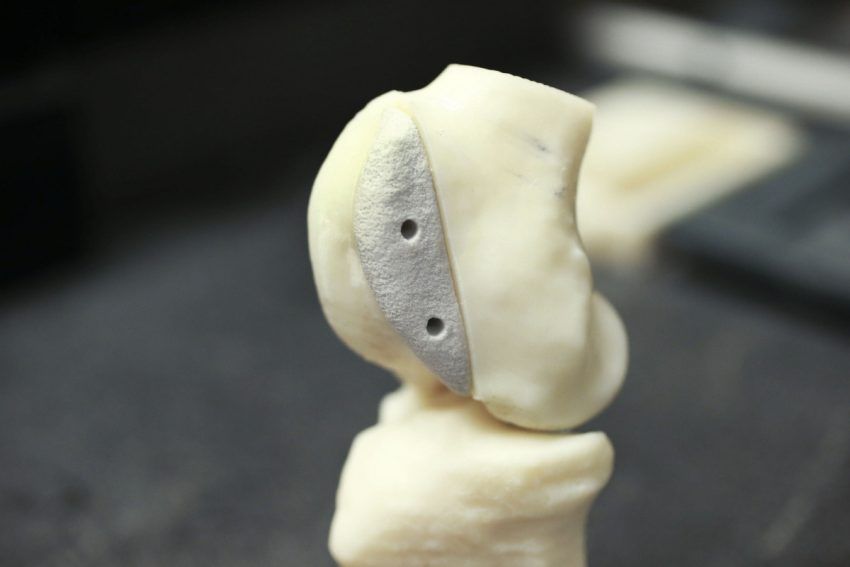 "
"
3D printed models can be instrumental in enhancing patient communication according to the authors. "It is another additive tool for patients to understand their surgical outcomes," comments Dr. David H. Song, a plastic surgeon and former president of the American Society of Plastic Surgeons. "In the right setting with the right educational material, it just enhances the doctor-patient relationship. It gives a starting point for a richer discussion." Dr. Neil Tanna, a plastic surgeon in New York, adds, "You basically print out the 3D photograph into a 3D model and you can use that as a baseline to discuss with the patient. Instead of pointing at pictures, you can show the exact problem." Once the patient and surgeon agree on the "idealized outcome" of rhinoplasty, the digital images of the patient's current appearance and simulated outcome can be converted into 3D printed models. "The tactile feedback and ease of visualization from different angles and profiles have complemented the 2D and 3D photographs, making the surgical possibilities and limitations of the procedure easier to understand for the patient,” according to the team at University of Texas Southwestern Medical Center in Dallas.
But the benefits do not stop there. In the operating room, they can provide a guide to the surgeon. The surgeon can refer to the 3D printed models as a "side-by-side reference," to ensure that the outcomes of cosmetic rhinoplasty are as close as possible to the planned appearance of the patient's nose.
The team from University of Texas Southwestern Medical Center in Dallas conclude, "Given the complexity of rhinoplasty, 3D printing may be a natural fit as part of the surgical care of these patients” improving the preoperative consultation process and providing a guide to the surgeon during the procedure. The use of 3D printing technology is being advocated by many members of the American Society of Plastic Surgeons to guide surgeons and patients towards more accurate and satisfying results in cosmetic surgery.
Custom 3D-Printed Models Help Plastic Surgeons Plan and Perform Rhinoplasty
Computer-designed, 3D-printed models are emerging as a useful new tool for planning and carrying out cosmetic plastic surgery of the nose, reports a paper in the June issue of Plastic and Reconstructive Surgery®, the official medical journal of the American Society of Plastic Surgeons (ASPS).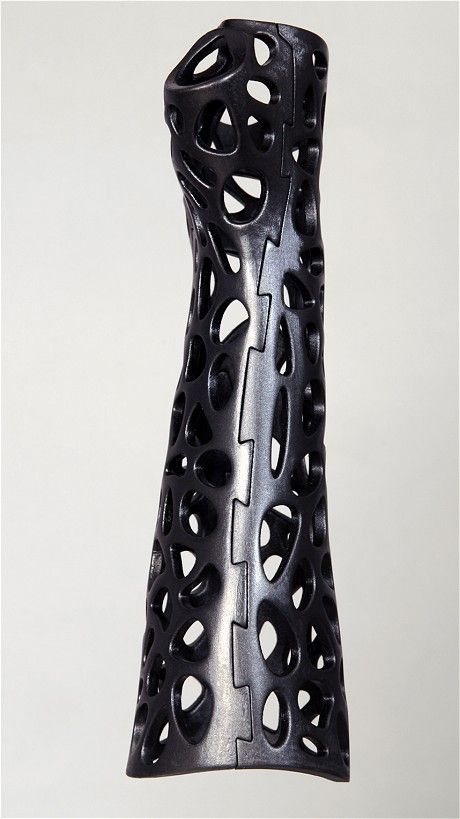
Customized, life-sized, 3D-printed, models can provide a useful visual reference in the operating room for plastic surgeons performing rhinoplasty, according to a special "Ideas and Innovations" article by ASPS Member Surgeon Bardia Amirlak, MD, FACS, of University of Texas Southwestern Medical Center in Dallas, and colleagues. They write, "Patient-specific 3D-printed models reflecting the actual 3D anatomy provides additional visual and tactile information to the surgeon, which may contribute to achieving the desired clinical result."
Printed 3D Models Provide Visual Guide for Rhinoplasty
In recent years, digital imaging technology has become widely used in planning many types of plastic and reconstructive surgery procedures. When discussing cosmetic surgery, the ability to create 3D "before and after" images – showing the patient's current appearance and the planned results of surgery – has been a valuable aid to the preoperative consultation between patient and surgeon.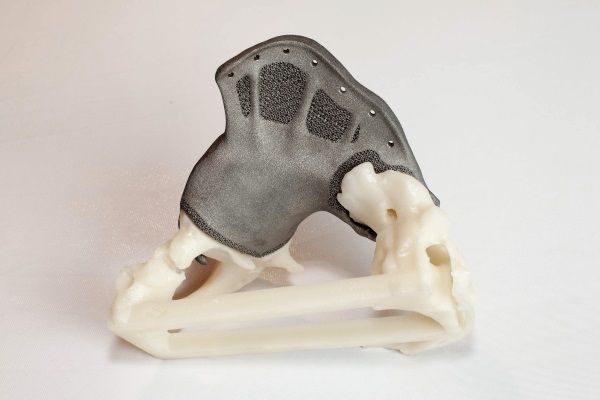
For Dr. Amirlak and colleagues, the growing availability of 3D printing technology provides a logical next step: using 3D digital images to crate printed models of the proposed appearance of the new nose. Once the patient and surgeon agree on the "idealized outcome" of rhinoplasty, the digital images of the patient's current appearance and simulated outcome are converted into 3D-printed models. Full-color models are printed using gypsum powder – providing a more detailed and lifelike appearance than with 3D printing using polymer resin.
In the operating room, the surgeon can refer to the 3D-printed models as a "side-by-side reference," helping to see and appreciate subtle changes occurring during the rhinoplasty procedure. The models help to ensure that the outcomes of cosmetic rhinoplasty are as close as possible to the planned appearance of the patient's nose.
Three-dimensional printed models can also help to improve communication with the patient before surgery, Dr. Amirlak and colleagues have found. They write, "The tactile feedback and ease of visualization from different angles and profiles have complemented the 2D and 3D photographs, making the surgical possibilities and limitations of the procedure easier to understand for the patient." The models take about a week to create, with an average cost of $300.
Amirlak and colleagues have found. They write, "The tactile feedback and ease of visualization from different angles and profiles have complemented the 2D and 3D photographs, making the surgical possibilities and limitations of the procedure easier to understand for the patient." The models take about a week to create, with an average cost of $300.
While 3D printing technology isn't new, it is increasingly available and affordable for a wide range of applications. Three-dimensional printed models have been used for craniofacial and other types of reconstructive surgery, but have received relatively little attention in cosmetic surgery.
Rhinoplasty – sometimes called a "nose job" or nose reshaping – is a common yet challenging procedure for plastic surgeons. It is one of the most frequently performed types of cosmetic surgery. About 219,000 rhinoplasty procedures were performed in the United States in 2017, according to ASPS statistics.
"Given the complexity of rhinoplasty, 3D printing may be a natural fit as part of the surgical care of these patients," Dr. Amirlak and coauthors write. In addition to improving the preoperative consultation process and providing a guide to the surgeon during the procedure, they believe that 3D printing technology "has numerous prospective clinical and research uses in aesthetic surgery."
Amirlak and coauthors write. In addition to improving the preoperative consultation process and providing a guide to the surgeon during the procedure, they believe that 3D printing technology "has numerous prospective clinical and research uses in aesthetic surgery."
Plastic and Reconstructive Surgery® is published by Wolters Kluwer.
Click here to read "Three-Dimensional Printing in Rhinoplasty"
Article: "Three-Dimensional Printing in Rhinoplasty" (doi: 10.1097/PRS.0000000000004425)
About Wolters Kluwer
Wolters Kluwer (WKL) is a global leader in professional information, software solutions and services for the clinicians, nurses, accountants, lawyers and tax, finance, audit, risk, compliance and regulatory sectors. We help our customers make critical decisions every day by providing expert solutions that combine deep domain knowledge with advanced technology and services.
Wolters Kluwer reported 2020 annual revenues of €4. 6 billion. The group serves customers in over 180 countries, maintains operations in over 40 countries, and employs approximately 19,200 people worldwide. The company is headquartered in Alphen aan den Rijn, the Netherlands.
6 billion. The group serves customers in over 180 countries, maintains operations in over 40 countries, and employs approximately 19,200 people worldwide. The company is headquartered in Alphen aan den Rijn, the Netherlands.
Wolters Kluwer provides trusted clinical technology and evidence-based solutions that engage clinicians, patients, researchers and students in effective decision-making and outcomes across healthcare. We support clinical effectiveness, learning and research, clinical surveillance and compliance, as well as data solutions. For more information about our solutions, visit https://www.wolterskluwer.com/en/health and follow us on LinkedIn and Twitter @WKHealth.
For more information, visit www.wolterskluwer.com, and follow us on Twitter, Facebook, LinkedIn and YouTube.
the world's first hand and face transplant
Analytics and business
Implementation stories
Medicine
Experts recommend
Author: Kirill Romanov
Author: Kirill Romanov
Trends 2021: 1. New opportunities for 3D printing in medicine | 2. Digital communications and remote interaction | 3. 3D printing combined with virtual and augmented reality | 4. The growing role of quality management systems | 5. Further introduction of 3D printers in the work of clinics | 6. Increasing the availability of 3D printers | How 3D technology helped bring about the world's first successful hand and face transplant
New opportunities for 3D printing in medicine | 2. Digital communications and remote interaction | 3. 3D printing combined with virtual and augmented reality | 4. The growing role of quality management systems | 5. Further introduction of 3D printers in the work of clinics | 6. Increasing the availability of 3D printers | How 3D technology helped bring about the world's first successful hand and face transplant
In 2020, due to the coronavirus pandemic, many industries around the world have been hit by a crisis never seen before. Most of them managed to endure this test, especially the healthcare sector, which had to face an incredible workload, as well as a shortage of materials, equipment, medicines and labor.
The COVID-19 pandemic has made it clear that fundamental changes are needed in the healthcare sector. At the same time, the crisis has shown that innovative technologies, in particular 3D printing, can solve the most important needs of the industry. Therefore, it is not surprising that the pace of adoption of 3D printing in medical institutions continues to grow.
2020 has been a year of challenges. We hope that 2021 will allow us to look more confidently into the future and realize the full potential of innovative technologies in medicine. Let's take a look at this year's biggest hospital 3D printing trends, and then talk about a unique operation using Materialize 3D solutions.
iQB Technologies Experts Recommend Article: 3D Printing Industry Stands Up to Fight Coronavirus
1. New opportunities for 3D printing in medicine
In 2020, there was an acute shortage of essential medical supplies. The main reason is repeated disruptions in long supply chains during the pandemic. Thus, the advantages of 3D printing directly in medical institutions became apparent. With speed and versatility, 3D labs can quickly and easily adapt to new environments. If necessary, they can be used to print anything: from anatomical models for planning surgical operations to personal protective equipment.
Preoperative layout printed on a ProtoFab SLA600 DLC photopolymer 3D printer (iQB Technologies project)
In 2021, when supplies are still faltering, 3D printing is becoming a reliable and reliable assistant in the fight against this problem due to its availability. Necessity is always the impetus for change. It is the need for 3D printing that can expand the range of its application in healthcare.
Necessity is always the impetus for change. It is the need for 3D printing that can expand the range of its application in healthcare.
2. Digital communications and remote interaction
Today, when remote work has become an integral part of our lives, the need for new ways of effective interaction has increased more than ever. In healthcare, the rapid development of digital technologies will increase the demand for telemedicine - the remote diagnosis of diseases and the treatment of patients. Digital technologies will become indispensable for the interaction between doctors, patients and 3D laboratories. Now it is much easier to overcome the barriers to their distribution.
With Materialize Mimics Viewer, an online platform for desktop and mobile devices, you can share 3D patient anatomical models, surgical planning diagrams, and medical device drawings. The platform greatly simplifies remote interaction and collaboration. This powerful, yet simple and user-friendly solution allows clinicians to review clinical case files and share opinions. It is not required to be in the same office with other specialists.
It is not required to be in the same office with other specialists.
Using the Mimics Viewer, physicians and other professionals can collaborate effectively to create 3D anatomical models, planning diagrams, and device drawings
Want to learn more about the possibilities of 3D printing in healthcare? Our experts will answer your questions and develop a project for the implementation of 3D solutions for a medical center, hospital, clinic or research institute. Apply online !
3. 3D printing combined with virtual and augmented reality
They were once used to create video games. Now modern imaging technologies, such as virtual and augmented reality, are becoming more and more indispensable in clinical practice, complementing the 3D printing process.
With the development of hardware and specialized software, their potential has increased significantly. In addition, these technologies have become much more accessible. This will definitely not only increase the use of virtual technologies in teaching and visualization of clinical cases, but will also facilitate 3D device prototyping and perhaps even help surgeons perform operations.
This will definitely not only increase the use of virtual technologies in teaching and visualization of clinical cases, but will also facilitate 3D device prototyping and perhaps even help surgeons perform operations.
With an immersive effect, advanced visual presentation technologies will bring communication and interaction of specialists to a new level. Materialize believes that augmenting 3D printing with VR is the easiest and most cost-effective solution for remote planning and collaboration.
Virtual model of the pelvic bone
4. The growing role of quality management systems
In the European Union, manufacturers of 3D printers for medical facilities will be able to operate under Article 5 of the Medical Devices Regulation under several conditions. According to these conditions, medical equipment produced using 3D printing can only be used by the legal entity that created it. In addition, healthcare organizations should be equipped with appropriate quality management systems.
In the United States and a number of other countries, legislation regulating the use of 3D printing in medicine has not yet been sufficiently developed. However, as its popularity grows, the need for quality management systems is only growing.
Materialize strives for the highest quality in everything. As part of the worldwide support program for medical 3D printing, we rely on our rich 30-year experience in the development of quality management systems for medical equipment.
5. Further implementation of 3D printers in the work of clinics
The update to the DICOM standard (including encapsulated STL and OBJ files) has increased the prospects for integrating 3D printing and planning into the work of healthcare organizations. Files for 3D printing can now be easily archived and retrieved from Image Transfer and Archiving Systems (PACS). This simplifies the data tracking process as 3D image files are now linked to electronic health records.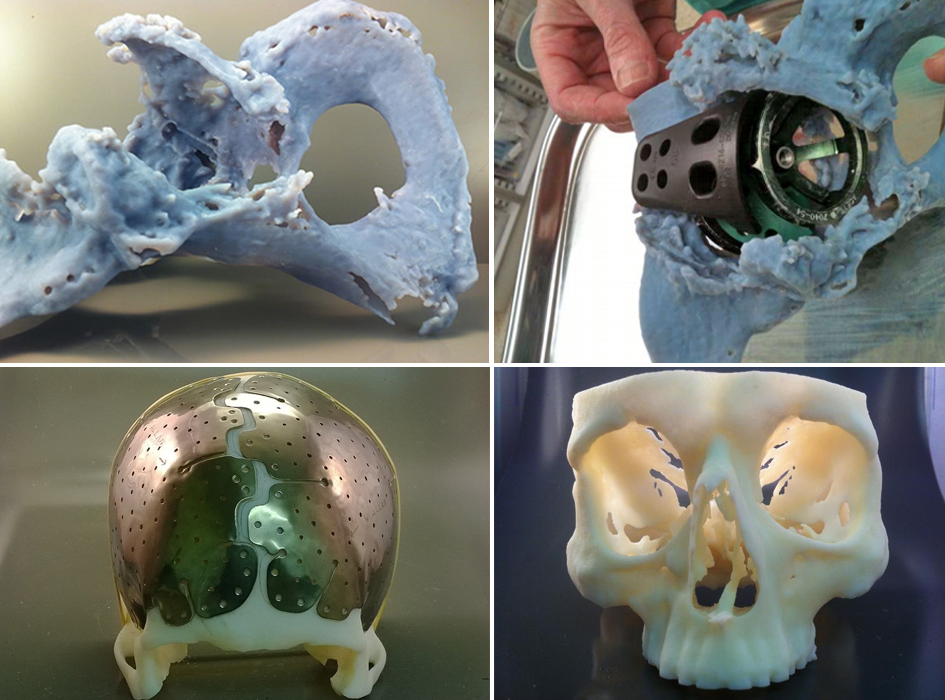
DICOM-encapsulated STL files are supported by version 23 of the Mimics Innovation Suite (MIS) anatomical design software, and new OBJ files are supported by MIS version 24, which will be released in May 2021.
6. Increasing the availability of 3D printers
3D printing technologies are constantly improving. Manufacturers of 3D printers strive not only to improve the quality of their products, but also to make their cost optimal. As a result, high-quality additive systems for medicine are becoming more affordable.
Increasing the availability of additive technologies will give impetus to the introduction of 3D printing directly in clinics and open up new opportunities for its application in healthcare.
We would like to illustrate what has been said with a story about an unparalleled operation, which has largely become possible thanks to the achievements of the 3D industry and the experience of not only doctors, but also engineers in additive technologies and 3D modeling.
Image-based planning and 3D printing have revolutionized personalized patient care. This technology provides surgeons with detailed information and allows them to be much better prepared for surgery.
Materialize's developments played a decisive role in the world's first double hand and face transplant, which was successfully performed at Langone Health in New York in February of this year. Materialize's innovative 3D planning and printing tools provide the speed and precision needed for this unique procedure. Surgeons are increasingly using them in their work and for less complex operations, as they help improve treatment outcomes.
A 22-year-old patient was involved in a car accident, as a result of which he received severe burns to his face and hands. Significant soft tissue damage prevented him from leading a normal life. For 14 months, Materialize medical engineers and NYU Langone surgeons rehearsed the operation in the lab to develop a precise plan of action. The team included Dr. Eduardo D. Rodriguez, Helen L. Kimmel Professor of Reconstructive Plastic Surgery, and Hansjörg Wyss, Head of Plastic Surgery at NYU Langone. Once a suitable donor was found, they only had 24 hours to give the patient a chance at a new life.
The team included Dr. Eduardo D. Rodriguez, Helen L. Kimmel Professor of Reconstructive Plastic Surgery, and Hansjörg Wyss, Head of Plastic Surgery at NYU Langone. Once a suitable donor was found, they only had 24 hours to give the patient a chance at a new life.
iQB Technologies experts recommend article: How 3D modeling helps to explore the retina at the nanoscale
For 14 months, Materialize medical engineers and NYU Langone surgeons rehearsed the operation in the laboratory to develop a precise plan of action
Patient Joe DiMeo before and after surgery / Photo © NYU Langone
In the months leading up to the operation, Materialize engineers coordinated the development of the action plan and created a 3D screen model based on the CT scan data. This allowed surgeons and engineers to virtually plan the operation and visualize various options in three dimensions, as well as recreate the full anatomical structure of the bone and determine the required level of surgical intervention. In addition, the design allowed surgeons to virtually select and place implants to determine their optimal placement. Once the action plan was finalized, Materialize engineers printed customized surgical guides, anatomy models, and graft instruments.
In addition, the design allowed surgeons to virtually select and place implants to determine their optimal placement. Once the action plan was finalized, Materialize engineers printed customized surgical guides, anatomy models, and graft instruments.
During this historic operation, Dr. Rodriguez and his team of sixteen used 3D cutting and drilling templates printed by Materialize. A fully controlled system for moving and placing bone fragments was tailored specifically to the patient's anatomy and helped to use medical instruments with high precision, reducing the overall time of the operation. Materialize engineers also designed and 3D printed sterilizable nerve and blood vessel identification tags, implant transport models and a splint for optimal implant placement during soft tissue reconstruction.
Materialize engineers coordinated the development of the operation plan and created a 3D screen model based on computed tomography data
Preoperative planning allowed surgeons to virtually select and place implants to determine their optimal placement.
Taking into account the anatomy of the patient, a fully controlled system for moving and placing bone fragments was selected, which helped to use medical instruments with high accuracy, reducing the overall time of the operation.
“Such complex tissue grafting operations bring together a large team of specialists and pose new and unique challenges,” says Dr. Rodriguez. “They require careful planning, and everything must be done in a short time and with high efficiency and accuracy. Virtual 3D planning and the creation of individual 3D tools for patients allow us to gain additional information at the planning stage and increase speed and accuracy directly during the strictly time-limited operation.”
Brian Crutchfield, Vice President and General Manager of North America, said, “Image-based planning and 3D printing have revolutionized the personalized patient experience. This technology provides surgeons with detailed information and allows them to be much better prepared for surgery. Leading clinics use 3D planning and printing services because it helps predict the course of treatment, which would not be possible without the use of 3D technology.”
Leading clinics use 3D planning and printing services because it helps predict the course of treatment, which would not be possible without the use of 3D technology.”
Materialize pioneered many outstanding medical 3D printing solutions and helps researchers, engineers and clinicians create innovative, customized therapies that help improve and save lives. The Materialize software and services platform serves as the basis for certified medical 3D printing for clinical and research purposes, and includes virtual planning tools, 3D anatomical models, custom surgical guides, and implants.
Materials provided by Materialize
Article published on 04/08/2021, updated on 03/04/2022
3D printing makes it possible to see your face
Plastic surgery: 3D printing makes it possible to see your face even before surgery
Plastic surgery is considered very popular today. An experienced, talented surgeon is able to "see" the new face of his patient even before surgery. However, there are always doubts about whether the face will be perfect, whether the patient will like it, how quickly he will perceive himself in a new look. It often happens that the patient wants a face like a celebrity, because it is impeccable, in her opinion. However, the doctor thinks differently.
However, there are always doubts about whether the face will be perfect, whether the patient will like it, how quickly he will perceive himself in a new look. It often happens that the patient wants a face like a celebrity, because it is impeccable, in her opinion. However, the doctor thinks differently.
This problem was solved once and for all by the famous Turkish surgeon and owner of the aesthetic surgery clinic - Yakup Avzar. He makes masks of the future face of his patients so that there are no misunderstandings. Now they can not only see the new face in detail, but also touch it, and discuss possible shortcomings with the doctor.
It is interesting that the mask is made very realistically, in full size, taking into account all the anatomical nuances.
Dr. Avzar was helped to achieve this result by technologies of 3d printers , which he has been successfully using for several years.
How is the mask created?
Obviously, printing a new face mask in 3D is far from easy.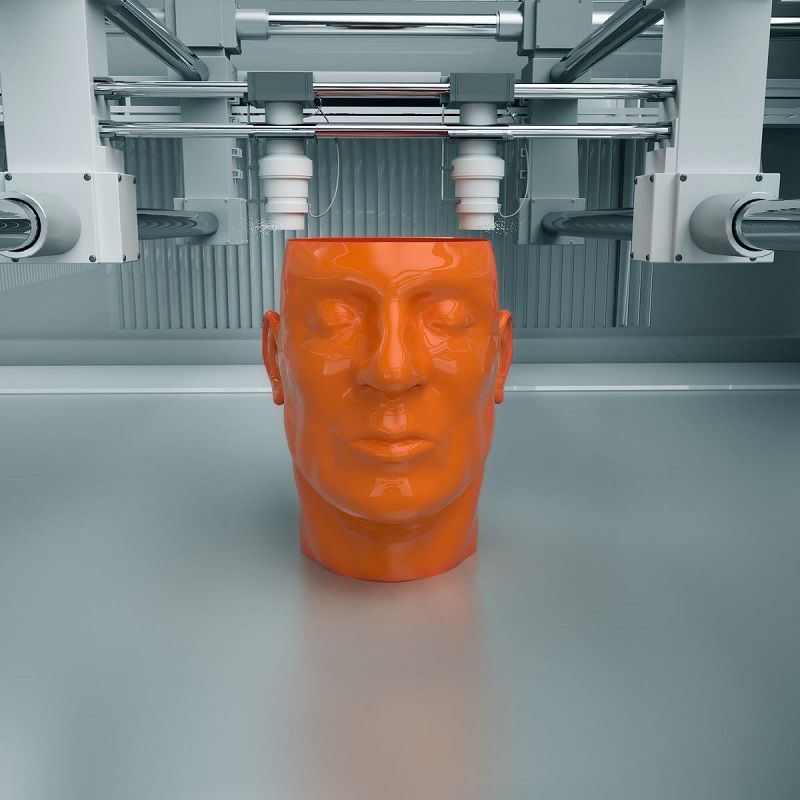 You need modern 3D equipment. It will require the digitization of a physical object into a three-dimensional model, the correct setting of a 3D printer. There are other nuances, such as, for example, it is necessary to transfer the texture of the face, the color of the future mask, and for this you need to set the necessary parameters to the printer.
You need modern 3D equipment. It will require the digitization of a physical object into a three-dimensional model, the correct setting of a 3D printer. There are other nuances, such as, for example, it is necessary to transfer the texture of the face, the color of the future mask, and for this you need to set the necessary parameters to the printer.
Dr. Avzar uses 3D scanners from Artes to achieve high precision in creating a mask. In particular, a portable EVA model designed for a wide range of applications. The device can digitize small objects, as well as physical objects. The scanner is highly sensitive, simple and safe. Shooting is carried out quickly, about 15 minutes, without causing inconvenience to patients.
It is worth mentioning that Mr. Avzar is also a master of modeling, a sculptor. Before he began to apply in his practice 3D printing technology , he made masks of new patients' faces with his own hands. Handmade is great, but the hand-sculpted mask was not as realistic as the 3D printed mask.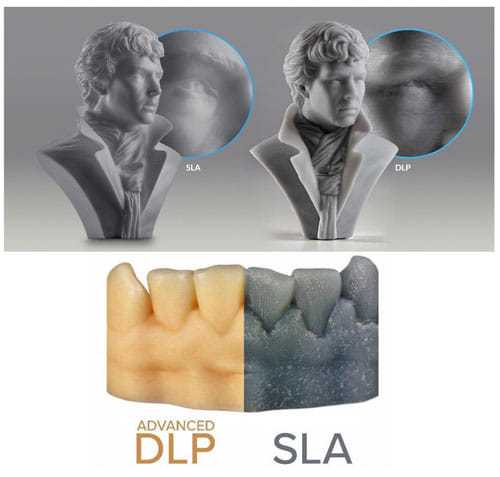
The exhibition of 3D equipment, organized by Artec's partner company Teknodizayn, helped Dr. Avzar understand that the introduction of additive technologies into practice will speed up work, and will make it possible to demonstrate the desired face shapes to patients before surgery. The mask is also a kind of prototype for the doctor; he can correct unaccounted for nuances already during the surgical intervention. Patients liked the innovation, they examine their masks with curiosity, getting used to the new face.
Dr. Avzar tried various types of 3D printing . For example, powder printing technology, but this method did not satisfy the doctor, it did not convey high color accuracy. In the course of experimental work, Avzar chose a printing device from Mcor. This printer is safe, environmentally friendly, able to accurately reproduce various color shades. Using 3D equipment, the doctor now makes 20 masks a month, instead of one or two handmade ones.
Dr.


